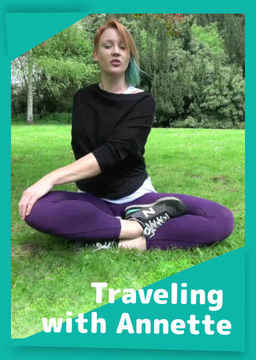









Difficulty:
 Newbie
Newbie
USA Northeast
Here's a quick summary of the different kinds of words we have in the English language and what they are used for.
Difficulty:
 Newbie
Newbie
USA
Dates are usually expressed with ordinal numbers. Sometimes, though, what we write is different from what we say.
Difficulty:
 Newbie
Newbie
USA
Ordinal numbers help us put things in order or in a sequence. Sigrid teaches us the suffixes we use to turn cardinal numbers into ordinal ones.
Difficulty:
 Newbie
Newbie
USA
Sigrid explains what cardinal numbers are and gives us some writing and pronunciation tips.
Difficulty:
 Newbie
Newbie
USA Northeast
Sigrid finishes the alphabet with "Z," covering words like "zone" and "zebra," but also the useful suffix "-ize."
Difficulty:
 Newbie
Newbie
USA
"Y" is a tricky letter because it's both a consonant and a vowel. As a vowel, it has different sounds. Don't worry. But hey, maybe keep your eye on the "Y." Don't let it fly away.
Difficulty:
 Newbie
Newbie
USA
"X" is a special letter in that we often use it by itself. It's useful in a lot of situations. In the middle of a word, however, it can be pronounced in a few different ways.
Difficulty:
 Newbie
Newbie
USA
"W" is a consonant, but it is very vowel-like and is considered a "semi-vowel." "W" is featured in plenty of important words, and it combines with other letters to make some new sounds.
Difficulty:
 Newbie
Newbie
USA
"V" is a voiced consonant. "Voice" starts with "V." We make the sound with the upper teeth lightly touching the lower lip, like "F" but with the voice, too. It vibrates. The verb "to vibrate" also starts with "V." That should make it easy to remember.
Difficulty:
 Newbie
Newbie
USA
"U" is an interesting vowel, and has a few different sounds. It can even sound like the consonant "Y," and combines with other vowels to make new sounds.
Difficulty:
 Newbie
Newbie
USA
"T" is for "tricky." Depending on what letters "T" is combined with or next to, it is pronounced differently. Sigrid explains and gives some examples.
Difficulty:
 Newbie
Newbie
USA
The letter "S" has a couple of different sounds. It's a very important letter because it's used to form the plural of many nouns as well as the third person singular of verbs.
Difficulty:
 Newbie
Newbie
USA
The letter "R" is difficult to pronounce for lots of people, even native speakers. Sigrid shows us how "R" sounds in different kinds of words.
Difficulty:
 Newbie
Newbie
USA
Sigrid gives a quick explanation of what Yabla is and how the Yabla player works.
Difficulty:
 Newbie
Newbie
USA
The consonant "Q" is a special letter. We almost never find it without a "U" following it. Sigrid gives us plenty of examples of how it's used.
Are you sure you want to delete this comment? You will not be able to recover it.